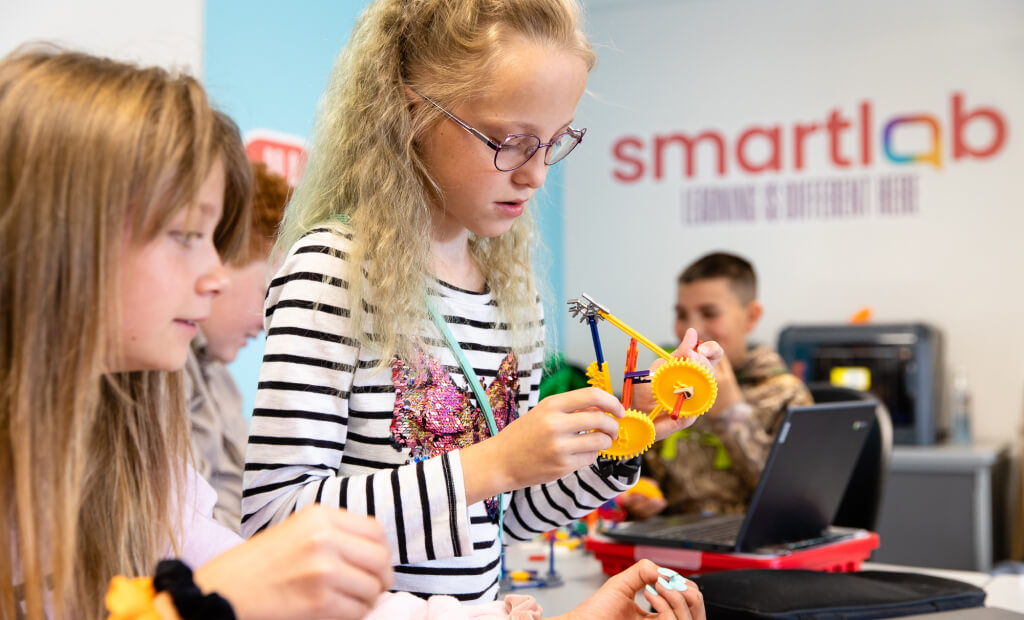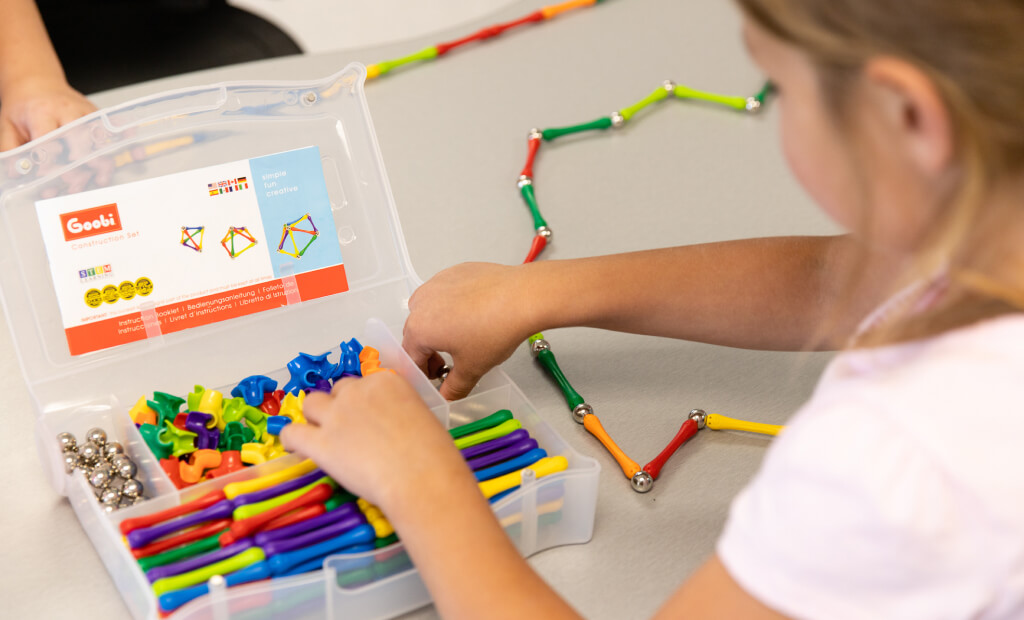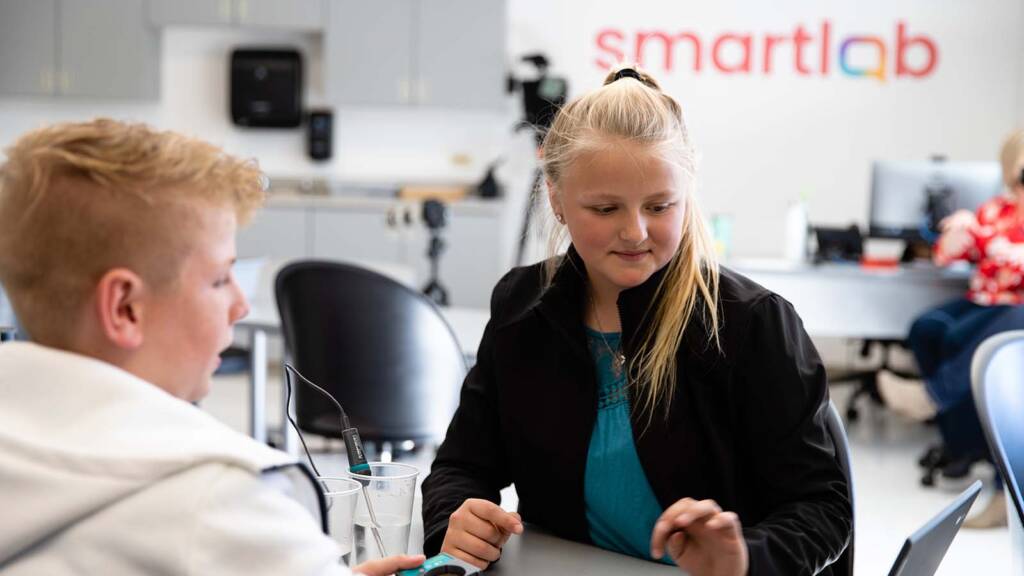Preparing Students For The Future: Statistics & Tips
“What do you want to be when you grow up?”
It’s an age-old question that we’re all asked at one point or another — one that has been rightfully criticized as being too limiting or too directly tied to a single job or career. And today, facing a world economy and job markets that are increasingly disrupted, there has to be better ways to prepare children for their future.
Fortunately, there are approaches that can help better prepare students for the real world as well as the future of work — even accounting for the unknown. Here’s what schools and teachers need to know.
The Future of Work
Let’s start with the acknowledgement that no one can predict the future of work with any real accuracy. Nearly every aspect of what we think of as work has changed over the past 50 years, with the last few years especially serving as inflection points for shifting job expectations and power dynamics. The one sure thing we can understand about the future of work is that it will change in unexpected ways.
As for what’s likely to happen, the COVID-19 pandemic accelerated three major trends that we’re likely to see continue:
- Remote work and virtual meetings will be prominent parts of most jobs. Virtual communication will be less common than it was during the pandemic because it’s no longer required. However, the digital genie has been let out of its bottle. Some employers with positions that can be done remotely may push for a return to office policy, but they will be in direct competition with others who embrace and expand on the possibilities of remote and hybrid work.
- Ecommerce and digital transactions will continue to shape the economy. That digital genie has also brought about a paradigm shift in how we make purchases. Even as people return to in-store shopping, they still appreciate the benefits and features of online purchases. Retailers and other employers will have to find ways to modernize their customers’ experience by incorporating technology.
- Companies will adopt digital tech like automation and AI at a faster rate. The spike in technology investment goes beyond purchases and commerce. Automation is playing an increasingly important role in every industry — from financial services to healthcare and manufacturing — and we’re faced with increasingly important questions about the role of artificial intelligence in everything from customer service to screen writing and music production.
Those trends will have ongoing effects on the future of work, according to a McKinsey report:
- Future job growth will likely be more concentrated in high-skill jobs, while middle- and low-skill jobs will experience less growth or even decline.
- Increased automation, further development of green technology, and an aging population will have outsized effects on certain job categories.
- By 2030, one in 16 workers may find they have to switch occupations to a new career.
As the U.S. population continues to diversify, initiatives in diversity, equity, and inclusion (DEI) will continue to play an important role in the evolving workplace. Despite disparities in pay, between 1960 and 2010 up to 40% of U.S. GDP growth can be attributed to the increased participation of women and people of color in the labor force. That number will only continue to grow as we see more population shifts and an embrace of inclusive hiring practices and equitable pay.
The Role of Schools
Research shows that schools play a critical role in affecting social, civic, health, and workplace outcomes long after the conclusion of formal education. Because of that, it is essential for educators to understand that preparing learners for the future is less about teaching specific skills and more about fostering broad skill sets that encourage flexibility, adaptability, and creative thinking.
It’s helpful to consider these skill sets as falling into one of three categories: cognitive skills, social or interpersonal skills, and self-management or intrapersonal skills.
- Cognitive Skills
Cognitive skills are what allow us to perceive, understand, and analyze information. They’re the foundation for reading, writing, analyzing, and problem solving. Finding ways to get students engaged with problem-solving activities, rather than promoting rote memorization, is essential for the development of cognitive skills.
Project-based learning (PBL) can be a great way to give students the space to engage in activities that help to build cognitive skills. PBL is also a great opportunity to explore STEM topics, especially for earlier grade levels. PBL can promote curiosity while providing students with greater ownership of their learning. This can not only increase engagement with the material, it can also help students develop a better understanding of how STEM is involved in their daily lives.
In addition, PBL can provide older students with a path forward by aligning their interests to real-world problem solving. Career and Technical Education (CTE) is another approach that can benefit students by offering them opportunities to explore career options and build academic and technical skills while in high school.
- Social / Interpersonal Skills
Social and interpersonal skills not only allow us to communicate and interact with others, they allow us to adapt to different situations and understand social contexts — even when they’re unfamiliar to us. Sound social and interpersonal skills help students develop important social-emotional learning (SEL) skills.
SEL encompasses a wide range of attributes, including self-awareness, self-management, social awareness, and responsible decision-making. These skills help students navigate the challenges of school and life and are essential for success both in and outside of the classroom. Students with well-developed SEL skills are able to engage more actively as citizens within their community, which can provide them with a greater voice and connections in society. A project-based learning approach, like those offered by SmartLab Learning, can effectively integrate SEL into academic learning.
It’s essential to promote SEL skills at an early age so that students can enjoy the most benefits. Younger students who practice SEL skills are often able to engage more in teamwork, show patience with others, express non-verbal communication, and show empathy. As they age, students with these skills will often find it easier to reach out to others with confidence, respect differences, create community partnerships, and build their own personal and professional networks.
- Self management / Intrapersonal Skills
There is some carry over from the social interpersonal approach to self-management and intrapersonal skills. When SEL is integrated into a school’s learning culture, it can also positively impact student’s self-control, allowing them to shift their thoughts, emotions, and behavior toward positive outcomes.Teaching self-management can help students address challenges within their life circumstances, including gender and sexual orientation, financial stability, or immigrant status. As young people grow and develop, their unique experiences with identity will have a strong influence on their self-esteem, career aspirations, and future goals.Helping students develop self-awareness and self-management aids them in building important life skills such as collaboration, assertiveness, responsibility, initiative, resilience, and flexibility.

How to Prepare Students for the Future of Work
So, what, exactly can schools and instructors do to help students build these skills to prepare them for the future? Here are our top recommendation and tips:
- Prioritize the development of versatile skills. While a curriculum will still require teaching specific skills, processes, or use of tools and technology — there is always the risk that a skill or training will be outdated or replaced. Students have to understand that learning is an ongoing process, not something that ends after graduation or when the class is over. This means that instructors should prioritize the development of transferable skills that apply across disciplines, such as problem solving, critical and analytical thinking, interpersonal skills, and resilience. These so-called “soft skills” are highly valued by employers looking to hire people who are career ready. One educator I worked with put it this way: “We need to teach them how to learn more than what to learn. That way they can be successful with whatever life throws their way.”
- Find ways to combine academic, emotional, and social competencies within curricula. A core part of the student’s experience shouldn’t just be what’s in the lesson plan. The classroom is a space to strengthen students’ sense of cooperation, responsibility, empathy, and self-management. There needs to be an effort to make these competencies part of the regular schedule. Consider creating spaces such as morning meetings, quiet time, or closing circles. These shouldn’t be “free” spaces, but moments where teachers can impart important skills and model behaviors and routines. As a middle school teacher, my morning advisory periods were perfect opportunities to introduce these competencies through directed experiences. That paved the way for reinforcing those skills or behaviors throughout the rest of the day.
- Normalize hybrid or virtual classrooms. Technology is an educational tool like any other, and can be used to open up new opportunities or — if misused — can reinforce bad habits. Technology is an increasingly central part of our daily lives, and teachers shouldn’t be surprised if their students know more about digital communication than they do. Applying a digital-first approach to classrooms can provide students with a familiar space while introducing the tools, skills, and expectations that are part of remote and hybrid workplaces. Practicing appropriate “netiquette” with students as they interact through virtual classrooms in Google Classroom or Canvas will help them use digital collaboration tools effectively in higher education or in the workplace.
- Find ways to overcome student achievement gaps. Student achievement isn’t just defined by test scores and classroom performance — it’s also about providing students with the right opportunities. Students who lack certain resources, support systems, or role models will often struggle not just in the classroom, but beyond graduation, as well. These disparities in educational, economic, and civic opportunities disproportionately burden Black, Latinx, and Indigenous students. If schools are to close the achievement gap, they will need to continue to make DEI initiatives a priority to challenge biases and increase equity and inclusivity.
Geographic location is also a major barrier for equal access to quality project-based learning. Read our case study on how the North Dakota Center for Distance Education employed technology to support learners state-wide.
- Relate learning to real-life situations. The more that students are able to connect what they’re learning to their own lives, the more they’ll see learning as an ongoing process. Designing curricula based on experiential learning can help provide more context for projects, which can create greater meaning and relevance for students. For this to work, it’s important to learn about your students and their backgrounds and what matters to them, including their challenges and interests. Finding commonalities or shared interests can offer direction on how to best incorporate experiential learning experiences into your curriculum and get students more involved in the real-world, relevant concepts they can take beyond the classroom.
- Have more engagement with the community. One of the best ways to implement experiential learning is to focus on community issues. Find ways to bring a project’s context out of the classroom and into the community. Some specific tips to consider:
- Reach out to local organizations and employers to co-develop educational programs and projects. Invite community experts from a variety of professions and industries to talk to students; ideally, these experts can also talk to students about their own work and answer any career-related questions.
- See if some tools such as measurement devices, recording equipment, or other technology can be checked-out of the classroom to be used out in the community or at the student’s home. This is dependent on the school’s resources, but can provide excellent opportunities for students to take their learning out of the classroom and into their world.
- Design large, team-based, semester-long projects that require talking to community members, gathering resources, and proposing possible solutions.
- Have older students actively reach out to community members that have real needs that have to be met. Rather than being just an example exercise, this can be a community project that actually works to address the issue.
- Leverage STEM to showcase career paths. Students are never too young to engage with STEM fields. Look for opportunities to explore these fields both within the curriculum and by employing supplementary educational content, such as the Learning Programs provided by SmartLab. These programs can help younger students discover different career paths and, as they age, provide professional tools to better prepare them for life beyond school.
Even smaller schools can provide students with next-gen skills. Read our case study on how Rawlins Middle School was able to expand their STEM program and show students a range of possible future jobs.
- Employ more project-based learning. Having students engage in meaningful activities through self-directed learning approaches like PBL will help to build constructive habits and ways of thinking that will benefit them throughout their professional careers. As a flexible instructional approach, PBL can be more easily adapted to meet the needs of any learner to improve student achievement, motivation, and confidence.
Want to learn more about how to help prepare students for college and a career? Download our free eBook on how to leverage project-based learning and provide more opportunities for students to acquire important core skills, build their individual growth, and make authentic connections.
Contact us for more details about how SmartLabs can prepare students for the future of work.
References
Casillas, Alex & Kyllonen, Patrick & Way, Jason. (2019). Preparing Students for the Future of Work. 10.4324/9781351210485-3.
Bowdler, Janis, and Harris, Benjamin. (2022) Racial Inequality in the United States. U.S. Department of the Treasury.
Jimenez, Laura. (2020) Preparing American Students for the Workforce of the Future. Center for American Progress.




